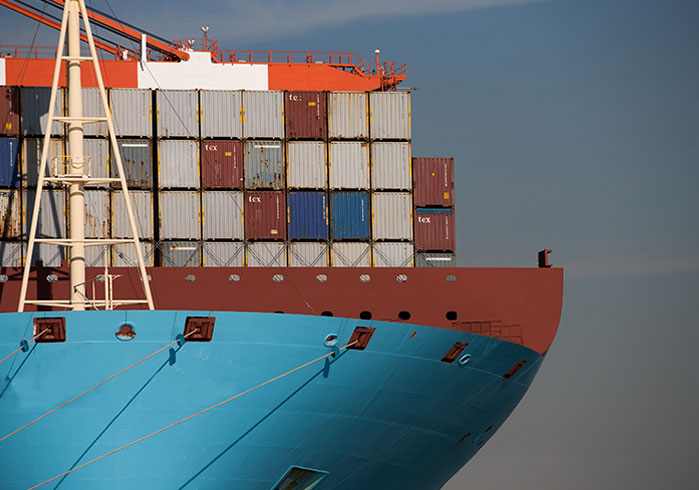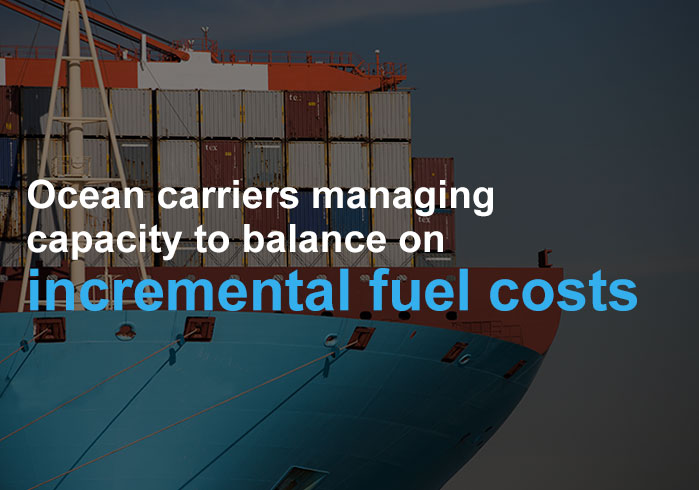
Two critical issues will have to be addressed by all Trans-Pacific Ocean carriers in 2020. The first relates to the level of low-sulfur fuel surcharge they can impose on the market without losing competitiveness. The second issue relates to how much they will be able to increase their rates during the yearly service contract negotiations that are coming up in the spring.
There is every possibility that the options available to the ocean carriers will be minimal. This is because of the anticipated slow growth in what is considered to be the most extensive US trade lane. Perhaps many of the carriers will opt to repeat the tight capacity management approaches that were used in 2019 for purposes of maintaining a specified floor on rates.
2020 carrier strategy
Early indicators are that many of the ocean carriers will seek to maintain rates by managing their capacity effectively. For example, members of the Ocean Alliance (including CMA CGM/APL, Cosco Shipping/OOCL, and Evergreen Line) announced in November 2019 that they were going to use nine blank sailings in February 2020. This has been predicted to be the slowest month of the year because of the closure of many Asian factories.
The Lunar New Year already took its toll with up to 2 weeks of low activity starting on the 25th of January. As the event approached, many other carriers announced some adjustments to their scheduled journeys. It is also likely that the price of fuel will inform operational decisions. For example, as of the 1st of January 2020, there has been an IMO 2020 mandate that caps sulfur content in bunker fuel at no more than half a percent. These caps are even lower than the 3.5%, which were previously implemented in the industry. That means that many carriers are having to move towards Low Sulfur Oil (LSFO), which represents an additional cost. An alternative is to fit vessels with scrubbers, but this contributed to annual fuel bill increases, which are projected to be anywhere from $10 billion to $15 billion.
The role of fuel
Towards the end of 2019, the vast majority of vessel operators were transitioning to the costlier fuel, and that meant implementing specific interim LSFO surcharges on a short term contract and spot rates. These charges meant an increment of about $150 per FEU on bunker surcharges from Asia to the West Coast. For journeys from Asia to the East Coast, the surcharges could add up to $250 per FEU.
When the true market price for LSFO comes into play, carriers will then transition again, but into more permanent bunker surcharges that reflect the actual fuel prices at the major bunkering ports.
Such developments complicate the process of identifying the ocean transportation aspect of the all-in-freight rates. Demand and supply will continue to determine the base rate. However, the market will also be influenced by the realities of a declining US GDP, squeezed imports from Asia, and low eastbound trans-Pacific trade.
The US-China trade dispute is into its second year, and the economic boom in the USA is slowing down. Imports from China into the USA fell by about 6.9% in the first ten months of 2019. This was blamed on Donald Trump’s imposition of a 25% tariff on Chinese goods, yet China accounts for 64% of all US imports from Asia.
All-in freight rates
Despite the acceleration of import volumes in the fall, Alphaliner (the maritime analyst) predicted that
year-end totals would have declined by 2% in 2019. This would have been the first negative year of imports in a decade. The projections for 2020 are not that much better, with a weak early January and February predicted.
According to the Global Port Tracker Report, imports declined by 1.2% in January and 0.3% in February. However, they will increase by 9.2% in March and 5.6% in April when compared to the previous year. When negotiations were taking place at the annual trans-Pacific service forum, reducing import volumes was a key consideration. Given the circumstances, it is hard to foresee an increase in the base ocean rate in 2020 and 2021. Some analysts have even predicted that carriers may reduce the ocean rate component for their all-in-freight charges so that they can charge the full bunker fuel increases based on the market rate for LSFO.
2020 Projections for import volumes
Representatives of the various carriers insist on passing LSFO costs to customers. That increases the pressure on the price in a way that accounts for the spread between LSFO prices and high-sulfur alternatives. If the eastbound trans-Pacific demand does not pick up, carriers will have to adopt a much more flexible pricing strategy.
It is only through strategic management of capacity that carriers can prevent the freight rate from completely collapsing. The vessel order book will be a vital component of this strategy, and there are indicators that the global fleet of 2020 is one of the lowest in history. It is anticipated that there will be a fall in the number of 20,000 TEU mega-ships as well as the smaller 10,000 to 14,000 TEU ships using the Asia-Europe and trans-Pacific routes.
The primary tool for managing capacity will involve canceling sailings on an ad hoc basis, mainly if bookings are weak. For example, carriers blanked 29 sailings in October and 8 in November 2019 at a time when the industry should have been busy. More of the same happened in February and will continue throughout 2020.
What to look for
Carriers and other interested parties should monitor the US-China trade war and its impact on spot rates. It is anticipated that vessel utilization on all-water services to the Gulf and East coasts will be higher than that to the West. Carriers are likely to express a preference for all-water services that allow for a higher share of the revenue. The key is to select the best routes for maximizing revenue and minimizing costs in this uncertain environment.




